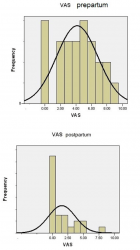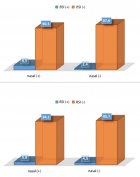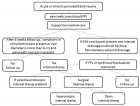Table of Contents
Nematicides in Egypt
Published on: 5th April, 2022
Plant-parasitic nematodes (PPNs) are famous aggressive pests that attack several crops worldwide. A lot of farmers are suffering from nematode diseases which cause critical crop losses. At the same time, the most of available solutions for this problem are depending on synthetic nematicides. These chemical nematicides not only cause environmental and health problems but also may cause resistance in nematodes. Despite the occurrence of resistance in nematodes under field conditions still less clear. Therefore, this note is about the registered nematicides in Egypt which may help those who are interested in nematicides. Also, the chemical group and mode of action of nematicides were mentioned according to the insecticide resistance action committee (IRAC) [1] and fungicide resistance action committee (FRAC).
Magnitude of aphid infestation, root rot and rust disease of lentil
Published on: 31st March, 2022
OCLC Number/Unique Identifier: 9470200773
Lentil is the major cultivated pulse crop of Bangladesh. Even if there are available high-yielding modern varieties of this crop but because of the higher yield gap, its demand is largely met by import. Thus, to evaluate the pest-related factors of low yield seven modern lentil varieties viz. Binamasur-5, Binamasur-8, Binamasur-9, Binamasur-10, BARI Masur-5, BARI Masur-6, and BARI Masur-8 were assessed to enquire the extent of aphid infestation, foot rot and rust disease incidence, and severity on seed yield. The experiment was laid out in a Randomized complete block design during Rabi season at BINA Sub-station, Magura. Data on insects and disease were recorded at definite SMW (standard meteorological week) and DAS (days after sowing). Outcomes divulged that maximum aphid infestation (number of aphids/plant) was noted between 7th to 9th SMW; where BARI Masur-6 had significantly lowest infestation level on 7th and 8th SMW. Summative foot rot disease incidence (%) was most in Binamasur-8 and Binamasur-9, but least in BARI Masur-6 and Binamasur-5. For rust, the highest incidence (%) was recorded with Binamasur-8 and Binamasur-5; contrary the lowest was seen with BARI Masur-6 and BARI Masur-8. Severity index (DSI) of foot and root rot was abundant by Binamasur-8 (72.89%) and Binamasur-9 (71.56%); conversely, Binamasur-10 (52.11%) and BARI Masur-8 (50%) had scarce DSI. In the case of rust, BARI Masur-5 (74.00%) showed top DSI accompanied by Binamasur-8 (58.33%). The utmost seed yield of 8.25 g/plant was produced by Binamasur-10; in contrast, the least was yielded by Binamasur-8 (5.45 g/plant). Weather factors (temperature, relative humidity, rainfall) were positively related to the number of aphids per plant. However, seed yield was negatively affected by aphid population, foot rot, and rust disease incidence. Overall, Binamasur-10 corroborated having better resilience to biotic and abiotic factors for delivering desirable economic yield
Quantification of minor, trace and toxic elements in stems of Santalum album (L.), Mangiferra indica (L.) and Tinospora cordifolia by instrumental neutron activation analysis
Published on: 4th March, 2022
OCLC Number/Unique Identifier: 9437625422
Stems of Santalum album (Sandalwood), Mangiferra indica (Mango wood), and Tinospora cordifolia (Giloy) are widely used in the preparation of herbal medicines and formulations in the traditional Indian health care system called Ayurveda. These were analyzed for 4 minor (K, Ca, Cl, Mg) and 13 traces (As, Ce, Co, Cr, Cu, Fe, Hg, La, Mn, Na, Se, V, and Zn) including toxic elements by instrumental neutron activation analysis (INAA). Samples in powder form along with reference materials (NIST SRM 1547 and INCT MPH-2) as comparators were irradiated for 1 min/6 h in Dhruva/CIRUS reactors at BARC, Mumbai. Gamma activity was measured by high-resolution gamma-ray spectrometry. In general, K, Ca, Fe, Mn, and Zn contents are very high in all the samples but Santalum album, widely used as a perfume, is more enriched in K, Ca, Cr, Zn, and Se. The concentration of Ca is always high as a major constituent (> 10 mg/g) in all the stem/bark of plant species. A strong inverse correlation (R2 = 0.9999) was observed between Fe and Zn in all three samples and that may be useful in drug manufacturing.
Growth performance of selected Moringa oleifera seed origins in North Florida
Published on: 25th February, 2022
OCLC Number/Unique Identifier: 9435282664
Moringa oleifera which is also known as horseradish or drumstick tree is a rapidly growing, drought-tolerant tree that can tolerate poor soil conditions. It is presently broadly cultivated and has turned out to be naturalized in numerous geographical areas of the tropics. The objective of this study was to evaluate the growth performance and survivability of Moringa seed origins in the North Florida region of the United States of America. Seedlings were prepared in the George Conoly Greenhouse at the Florida A&M University, Tallahassee, FL. The seed origins were Ghana, Texas PKM1, Haiti PKM1, Colombia, Nigeria, Jamaica, Nigeria Local, Impex PKM1, Peela Medu, India EOA PKM1, and Belton. A randomized completely block design (RCBD) was used in this study to compare the performance of eleven seed origins of M. oleifera Height and Stem diameter. Nigeria Local had the best performance in terms of height for 2018 and 2019 growing seasons, 191.98 ± 7.42 cm and 123.19 ± 26.67 cm, respectively. Colombia had the best performance in terms of stem diameter for the 2018 and 2019 growing seasons, 2.6 ± 0 cm and 2.08 ± 0 cm, respectively. However, DMRT revealed that the height and stem diameter of the seed origins were not significantly different (p ≤ 0.05). Therefore, the results revealed that the alternative hypotheses (Ha) that the Moringa oleifera seed origins were significantly different in heights and stem diameter were rejected.

HSPI: We're glad you're here. Please click "create a new Query" if you are a new visitor to our website and need further information from us.
If you are already a member of our network and need to keep track of any developments regarding a question you have already submitted, click "take me to my Query."

























































































































































